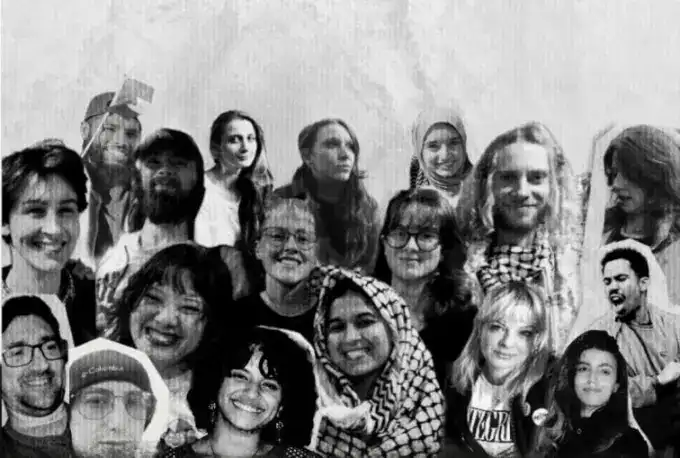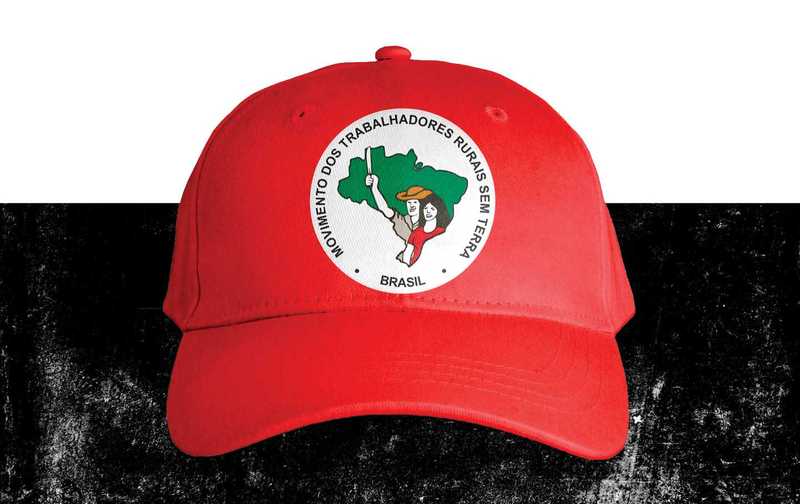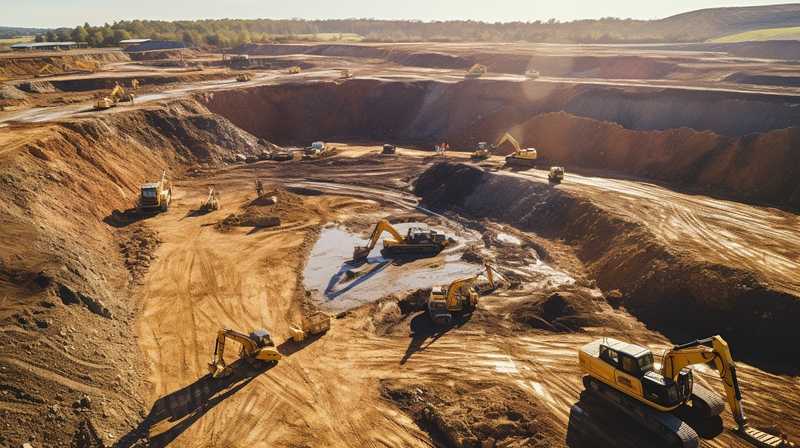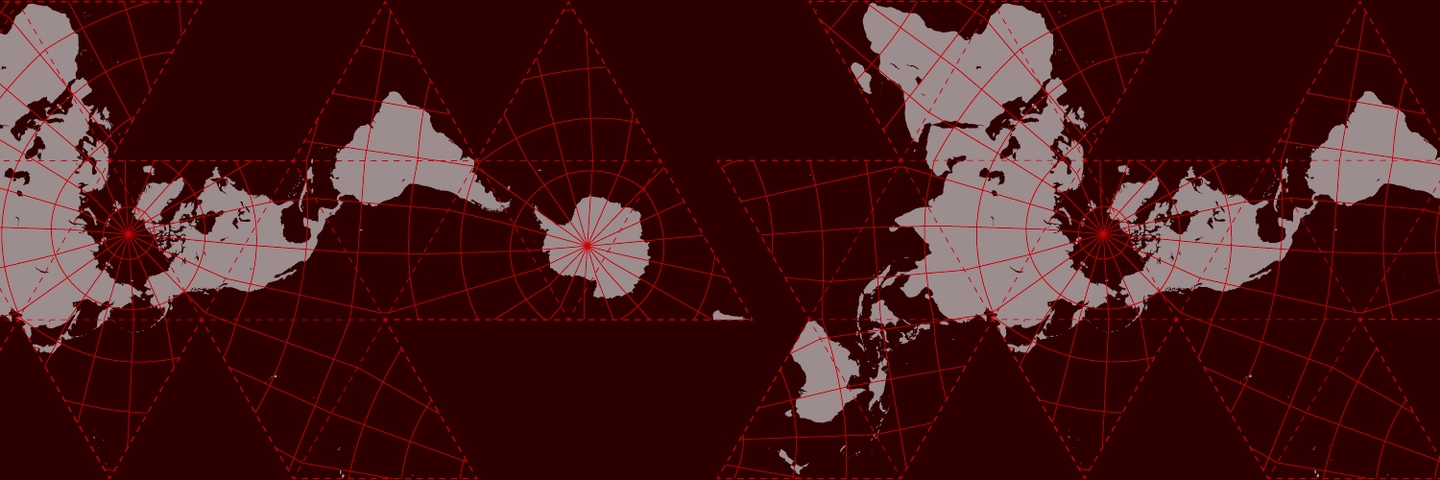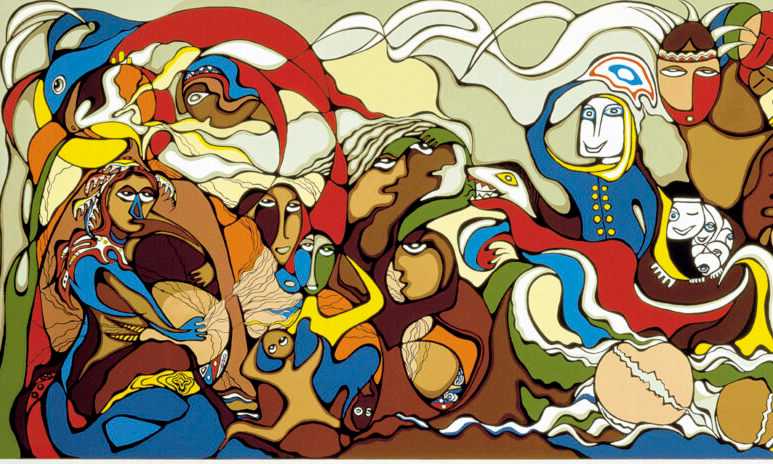
First published in Issue 36 of The Internationalist.
Saša Savanović: You start your argument with a comprehensive rebuttal of the common wisdom that humanity has, on its way to civilisation, passed through several stages which correspond to their underlying modes of production (from hunter-gatherer to farmer to commercial civilisation). Instead you argue that this periodisation has actually emerged as a reaction and a way of “neutralising” the power of indigenous critique that shook colonial metropolises at the dawn of the Enlightenment. Can you tell us how, in your account, the view of history as an almost mechanical progression through stages that came about?
David Wengrow: Well, this is a fairly complex process, which we try our best to unravel in chapter 2 of The Dawn of Everything. It involves a wide range of protagonists. Perhaps the most important is the economist and physiocrat Anne-Robert Jacques Turgot, who lived in the 18th century, and whose writings on what he called “universal history” outlined a theory of human progress, which in turn became the inspiration for Scottish Enlightenment thinkers such as Adam Smith and John Millar, whose work laid the basis of modern economic thought and, in some ways, the social sciences more generally. Their key move was to divide human beings according to their modes of subsistence or production and then use this as a framing device for just about every other aspect of experience (politics, religion, marriage customs, property laws, and so on). This is when we first get the notion of world history or social evolution as a series of developments between the stages of hunter-gatherer, herder, agriculturalist, and eventually the kind of urban-commercial society that these writers were keen to promote.
Social scientists have often noted how using these categories can easily lead to the sort of “vulgar” materialist view of human development that Marx later rejected, and in spite of this, they are still very much with us today. But why were they first proposed? This has everything to do with what the anthropologist Johannes Fabian called “the denial of coeval-ness” (in his book, Time & the Other). What happened in the 18th century, we argue, is something roughly like this: European intellectual and moral life was both deeply inspired and deeply threatened by accounts of Indigenous life and social freedoms elsewhere, especially in the Americas, and more particularly in the Great Lakes and Eastern Woodlands regions; we know this through the accounts brought back by missionaries and other travellers, which became best-sellers in the salons of Enlightenment Europe. In terms of things that progressive Europeans admired and aspired to - greater overall equality, the rejection of monarchy and religious dogma, and women’s freedoms, First Nations peoples were simply miles ahead.
The implications were enormous, but to relatively conservative thinkers like Turgot, also potentially very dangerous (and, of course, in the context of contemporary French society they were not entirely wrong to think this: remember The Terror wasn’t that far away in the future). So they came up with a very clever counter-argument, which has left its mark on how we think about human history right up to the present day. Yes, Turgot conceded, these so-called “Savages” do possess such freedoms and such equality, and that is to be celebrated, but the only reason they can possess it is not because they are more advanced than Europeans, but because they are more simple or primitive: by which he means simple in material and technological terms. The implication was that to regain such freedoms, one would have to go back to some notion of living in primitive huts, wearing no clothes, and having no personal possessions to speak of (of course, these were crude stereotypes of Native life, which bore little relation to reality, but the rhetoric effect was enormous). It effectively consigned Indigenous Americans to another sphere of existence altogether, in just the way Fabian describes, when talking about European perceptions of modern African societies. Rather than being interlocutors in debates about how contemporary nations should comport themselves, they became little more than emblematic of some earlier “stage” of human existence, before the coming of agriculture (which, in fact, many of them possessed), cities (which it turns out, they had a long history of creating), and so on. It’s a kind of intellectual strategy for silencing or as you say neutralising critiques that come from outside, and to a large extent, it has worked.
Saša Savanović: In one brief paragraph, almost in passing, you mention a curious type of property regime found among the Iroquoian-speaking groups in America wherein land ownership and labour was individual but their products were communal. It seems a very interesting arrangement that, to my knowledge, has no modern counterpart. How did this system function?
David Wengrow: Actually, as I think we make clear, in these cases land was owned by families (rather than individuals), worked by women, and its products were then disposed of by women’s collectives. The crucial institution was the family long house. A little over a year ago, I was actually invited to Wendake, which is the modern administrative centre of the Huron-Wendat nation (it’s on the outskirts of Quebec), where they’ve reconstructed one of these big structures of bark and wood for educational purposes. And I met an archaeologist called Jennifer Birch who is trying to reconstruct how these systems worked as far back as the 16th century or even earlier. Basically, the long house contained a number of families who each have their own compartments and women – especially the clan-mothers or matrons – definitely called the shots there, with men in a subordinate role. (Incidentally, the long house provided the social template on which the much larger League or Confederacy of the Haudenosaunee was built, and a strong case has been made that the League was one source of inspiration for the U.S. Constitution). As I say, the women of these extended households controlled rights in arable land, as well as seeds and farming equipment. Agriculture was organised under female heads who were elected, and it produced the trio of crops called the “three sisters” (corn, beans, and squash), they also gathered wild fruits and berries. Women were also in charge of the domestic economy, including preparing and dispensing cooked food to several families and, where necessary, to strangers. So they also controlled the staple foods that enabled typically male activities like inter-group Councils, hunting, and warfare: which also gave women an effective power of veto, which was institutionalised in the power of clan-mothers to nominate Council representatives and influence their decisions. Importantly, women also controlled the distribution of meat, fish, and other foods obtained mostly by men.
Saša Savanović: Throughout the book, you argue, and corroborate your argument with numerous examples, that human societies have shifted between hierarchical and egalitarian forms of organization for millennia, and that even our prehistoric ancestors consciously built and destroyed their social orders. Put differently, you show that human history abounds with diversity and complexity of political life. However, at one point, all those various configurations slid into a single one, or as you say, we got stuck. Can you summarise your argument about how we got stuck (and with what exactly)?
David Wengrow: Getting stuck means getting to a stage in global arrangements where as a species we are apparently unable to move, even in the face of mortal danger (erosion of democracy, spiralling warfare, impending climate collapse, etc.). Another way of putting it might be “capitalist realism,” as Mark Fisher called it, and the idea that there is basically no alternative to the present system, despite the fact that if we simply carry on the way we are, it places the very future of our species in doubt. I guess we could have spelt this out, but we felt it was pretty obvious. What is much less obvious is the process by which we arrived at this point, where we find it so difficult to even imagine workable alternatives. The standard story, which I hope we’ve done away with, was always something about things that are supposed to have happened thousands of years ago: the fall from hunter-gatherer egalitarianism, the invention of agriculture and private property, origins of cities leading to the rise of the State etc. It’s a story that turns the present into a footnote of the past. All the important thresholds were apparently crossed millennia ago, so there is nothing much left to decide. Nothing about our contemporary knowledge of the human past supports this narrative, which owes more to the speculations of Enlightenment philosophers than any real kind of evidence. If all we did in The Dawn was to make it clear why nobody with even a basic awareness of modern scientific evidence should still be trying to tell that story, then I think that would be enough. But we did also try to ask some better questions. Essentially, we suggest that “getting stuck” comes down to the loss of what we call the three elementary forms of human freedom: to move away, to disobey, and to dismantle and redesign social worlds in the kinds of fundamental ways you refer to. These are ideas I will continue to work with, and as I say, The Dawn was basically an attempt to clear away a lot of old philosophical rubbish to do with the “origins of inequality,” so that we can ask better questions about the course of human history. That’s roughly as far as we got, and as I explained in the book’s preface, our intention was always to address these new questions in a series of future volumes.
Saša Savanović: When comparing European and American conceptions of individual freedom, you assert that the former, being inherited from Roman law, is necessarily tied to notions of private property. In ancient Rome, freedom implied the power of the individual (that is the male head of household) to dispose of his property - including his slaves, his wife and children - as he saw fit. Moreover, since true freedom meant freedom from dependency on other human beings (except on those under one’s control) it also implied that households are to be more or less completely self-sufficient. To me this resonates strongly with Melinda Cooper’s account of the family as the point of convergence between neoliberalism and new conservativism: with neoliberalism, the nuclear family (once again) became the privileged site of debt, wealth transfer, and care, a sort of natural insurance mechanism and an absolute economic imperative. In other words, Cooper argues that even though neoliberalism wants to extend contractual relations to all spheres of life, it needs the family as its non-contractual bedrock. How do you see the entrenchment of familial relations as relations of property being played out today?
David Wengrow: Actually, this flows very nicely from the last point. We also noticed that something important, and very hard to reverse, happens when structures of care – such as households, families, or charitable institutions such as temples – become fused with organised forms of violence and domination: something we often find at the very foundation of kingdoms, empires, and nation-states. Otherwise, ephemeral acts of harm become transformed into the kinds of deep structural violence that are often less visible, but actually determine why so many people today are made to feel that their lives and needs simply don’t matter. This must be related, in ways we are only beginning to understand, to the loss of those basic social freedoms (to move away, to disobey, and so on). If you are asking how this plays out today, I think one of the clearest indications is our complete failure as a society to create adequate structures of care for the elderly or to properly value those professionals in society who do that sort of work, or the way in which grandparents are now often simply expected to provide huge amounts of childcare while their own children are out desperately trying to make ends meet. It’s as if we’re all living in some imaginary world where getting old is something that just happens to other people, which I think one could see as a symptom of exactly the kind of process that Melinda Cooper is talking about. The lack of any place within the nuclear family for the elderly once they cease to perform “useful” functions, and the pushing of vulnerable people in general into woefully underfunded institutions, all fits this idea that the household is becoming an increasingly ruthless bastion for the production of economic value and the protection of private property.
Saša Savanović: The book also offers a comparison between two conceptions of individualism, European which is about gaining an advantage over others, and American wherein individuals guarantee one another the means for an autonomous life. Can you elaborate on what autonomous life implied?
David Wengrow: Well, the possibilities are endless, but the key point here is that people in the second kind of society permit each other to live without fear of falling through the cracks completely: without fear of starving, or becoming homeless. It’s what David Graeber talked about as “baseline communism,” which exists to some degree in all societies but is often reduced to an absolute minimum in our own. These are the kind of things that Native American observers found so scandalous about the way Europeans comported themselves in early colonial towns, and of course, many Indigenous societies sent delegates to Europe (there’s a really good new book about this, by Caroline Dodds Pennock, called On Savage Shores). How can you let that happen to your own people?
Saša Savanović: In your account of American indigenous cultures, you identify three types of freedom that served as the basis of their social order: freedom to move away, freedom to disobey, and freedom to create or transform social orders. The minimal condition for the last one to be possible is the freedom to make promises. How free to make promises are we today?
David Wengrow: Actually, as I mentioned before, we apply these notions much more broadly. In fact, we venture that the three freedoms can be found at play – to various degrees and in various configurations – almost anywhere and everywhere in history that lies beyond the shadow of the modern nation-state. On the other hand, First Nations do provide some of the most striking illustrations. In the history of the American Midwest, for example, migration was often conceived as the restructuring of an entire social order, merging the three freedoms into a single project of emancipation: to move away, to disobey, and to build new social worlds. What we would now call “social movements” often took the form of quite literal movements through a landscape. If such freedoms existed until relatively recently among peoples forced to survive the effects of colonisation and genocide, how should we imagine the greater part of human history, before the expansion of racial capitalism and imperial systems of domination? How free are we to make promises today? Well, as David wrote in the conclusion to his brilliant book on Debt, most people today are crippled in this regard by the accumulation of debts to impersonal agencies, which they can hardly even hope to repay, and by the internalising of a sense of guilt that they are somehow responsible for this situation. Of course, that has enormous political repercussions, which those who are broadly in favour of the status quo must be well aware of. Why else force young people into full-time work and obscene levels of financial debt the moment they leave school? What kind of promises and commitments might they otherwise make to each other, about the kind of societies they really want to live in? I agree with David: we simply don’t really know yet, and we won’t until we create the conditions in which such freedoms can exist.
Saša Savanović: In one of the ending chapters, you offer an interesting proposition about how to re-conceptualize the notion of civilization. How do women fit into this picture?
David Wengrow: Yes, I came up with the notion that what we usually call civilization is basically the appropriation of women’s knowledge by self-aggrandising men, who like to carve their achievements in stone for the sake of posterity. It’s what makes up the bulk of most museum collections. The point actually comes quite directly out of my own field of archaeology, which makes you very sensitive to the question of what we leave behind us, what does and does not survive in the record of human activities. We generally associate the term civilization with great discoveries and innovations, and also with being in some sense civilized, in the sense of mutual kindness or hospitality. But then you look at the kinds of societies most often referred to by historians as “civilizations” and they are things like Imperial Rome, the Aztec or Inca Empires, or Ancient Egypt: basically, systems held together by violence, coercion, and almost invariably also the suppression of women. Actually, these societies invented far less than we think because we tend to be blinded by the pyramids and other great monuments. In fact, as we explore in the book, most of the important scientific achievements in areas like maritime navigation, mathematics, metallurgy, the use of plants for medicines and so on all pre-date kingdoms and empires by thousands of years. And what’s more, they spread over enormous areas with no central mechanism of coordination or top-down governance, basically through practices of shared ritual and hospitality. And it so happens that many of them were pioneered using perishable materials – like plant fibres and textiles – that are simply much less visible in the archaeological record: and which are likely to have been the preserve of women’s science. So: why don’t we call this “civilization” instead?
Saša Savanović: In which way archaeological, anthropological and historical approach can open a space for thinking about our contemporary problems and struggles? Where can some sort of “indigenous critique” - powerful enough to shake existing imaginaries and let us create new ones - come from?
David Wengrow: We talk about Indigenous critique in the context of European encounters with the First Nations of the American Eastern Woodlands, because these are most germane to the questions we were asking about why Enlightenment philosophers became fixated on a question about “the origins of inequality.” But the Indigenous critique is of course multiple critiques, going back in time to the earliest colonial encounters (Montaigne’s famous essay On Cannibals, for example, written in 1580, involves a scathing commentary on the injustices and absurdities of European society, as viewed through the eyes of Tupinambá peoples, in what is now eastern Brazil). And it goes forward in time to the present day. But the Indigenous critique is also a “weapon of choice.” The target or enemy is not always the same. Of course, there are historical continuities and relationships, but there is no reason to think that something like, say, Davi Kopenawa’s shamanistic critique of capitalist materialism is going to be identical to a Yanomami critique from the 18th century. Consider how much the role of religion in justifying European hegemony has changed, for example. To suggest otherwise is to deny the intelligence of the critics, and their ability to form powerful rhetorical strategies for the problems and challenges of their own times. That doesn’t make such critique in any way less authentic unless your criterion for authenticity is being so completely trapped within another worldview that no serious form of cross-cultural dialogue is ever possible, which is really just another way of shunting non-Europeans into what Michel-Rolph Trouillot famously called “the Savage Slot”. By taking such contemporary critiques seriously, we become attuned to how our own intransigence is rooted in essentially mythical structures of thought about human possibilities, which we all grow up with, and which I started off talking about. Archaeology and history have a key role to play in exposing those structures for what they are, and also in allowing us to reach towards new understandings of human possibilities, based on the evidence of what people have actually been and done—including the many other ways in which they formed relationships with the non-human world. But all this new scientific evidence is of little use, unless we cultivate the capacity to understand it, which means being able to step outside our most familiar conceptual frameworks and allow ourselves to imagine human social life in structures other than ones we are educated into. I’m not talking here about some kind of utopian exercise or wild speculation. I’m talking about anthropology which – for all its problematic history and current anxieties – can still contribute in unique ways to contemporary projects of emancipation. I think that, in his life and work, David Graeber demonstrated exactly that, and there is a book of essays coming out later this year, with excellent contributions from multiple anthropologists, who try to follow his example. It’s edited by Holly High and Joshua Reno, and will be called As If Already Free: Anthropology and Activism After David Graeber (I just had the great pleasure of writing a blurb for the dust jacket).
David Wengrow is a British archaeologist and Professor of Comparative Archaeology at the Institute of Archaeology, University College London. He co-authored the seminal text The Dawn of Everything: A New History of Humanity which was a finalist for the Orwell Prize in 2022. Wengrow has widely written on social inequality and climate change for The Guardian and The New York Times.
Image: The Indian in Transition by Daphne Odjig reflects the history of Indigenous people from before contact with Europeans, through centuries of colonization.
